
UPDATE: 10/11/2021; 10:34:18 PM
“Science” really serves Satan. They are seeking to create eternal life for humanity without GOD. Satan has always wanted to be GOD. Everything he does is to kill, steal and destroy. That is what the Bible tells us. He wants to USURP GOD. To become GOD, and rule everything, to reshape the world into his IMAGE of what it should be. Through genetic manipulation, he is reshaping man. Looking to force us to come under his TOTAL CONTROL. He wants to be able to not only KNOW our very thoughts, but to control them. He wants to control us for eternity. He thinks he has found a way to change our cells so that we can live forever, in bondage to him. Don’t believe me? Well, maybe you will by the end of this post.
TAGS: Department of Molecular and Cellular Biology, limb regeneration, regeneration, stem cells, Women in STEM awards, Developmental Biology, cell biology, neurobiology, model organisms, genomes, Gene Regulation, Insertion via Injection, Genetic Modification, Transhumanism, New World Order, Eternal Life, Unable to Die, Cyborgs, Patriots, Winter Soldiers
Revelation 9:6
“And in those days shall men seek death, and shall not find it; and shall desire to die, and death shall flee from them.”
UPDATE: 10/11/2021; 10:34:18 PM
Streamed live 7 hours ago; 10/11/21; 10:33 PM
ALIEN LIFE FORMS FOUND IN THE VAXX, THEY ARE MULTIPLYING
OFF GRID DESERT FARMING WITH PAUL & ADRIENNE Published October 11, 2021 3,598 Views


spacer
THE UNDYING HYDRA VULGARIS: A CREATURE THAT CLONES ITSELF AND MAY BE NEUROTOXIC? (MINI DOCUMENTARY)
There appears to be a tiny living creature inside the CV-19 vaccine which looks very much like this. The “Hydra Vulgaris” is immortal. See lengthy description below for details. Also see ‘Self-aware’ immortal creature found in vaccine vial – Carrie Madej on Stew Peters https://www.bitchute.com/video/bwh6mDBKDcCZ/
Is this nasty thing eating away at peoples nervous system? Read on…
Hydra vulgaris, the fresh-water polyp, is a small animal freshwater hydroid 10mm to 30mm long and about 1 mm wide. The hydra have four to twelve tentacles that protrude from just outside the mouth. They feed by extending their tentacles and waiting for food to touch the tentacles. They then bring the food to their mouth, ingest and digest the organism. Anything that cannot be digested is egested. Ingestion and egestion occur through the mouth.
Like other hydras, Hydra vulgaris cling to a base object with a “foot” pad, shaped like a disk. The Hydra moves by releasing its grip on its base and is carried away by the current. H. vulgaris can also move by bending over, grabbing a surface with its tentacles, releasing its grip with its “foot” and flipping over itself.
H. vulgaris is often used, like many hydra, as a model organism for morphallactic regeneration because they are easy to care for, requiring minimal direct care, and reproduce relatively quickly. It is reported that they do not undergo senescence, making them biologically immortal.
This species can reproduce in three ways: sexual reproduction, budding, and indirectly through regeneration. The evidence of intelligent self-assembly of nanotechnology and intelligent filament-movement is an indicator of synthetic biology and nanobioelectronics, as per several scientific papers published in various journals, and points to the stealth inclusion of Graphene Oxide in the Moderna vaccine for electromagnetic manipulation of cells and neurons via the creation of synthetic neural networks in the human body and brain. This is a clear sign of malfeasance and intended transhumanizing and cyborgizing of the human body through the COVID vaccines.
It must be remembered that both Pfizer and Moderna developed the Transhumanist mRNA vaccines for DARPA, on DARPA contracts from 2013. Pfizer and Moderna’s military connections as well as the mRNA connections with DARPA’s Regina Dugan now directing the Welcome LEAP ventures and DARPA’s Dan Wattendorf now at the Gates Foundation were discussed here earlier. DARPA’s “Pandemic Prevention Platforms” and ADEPT diagnostic and monitoring platforms are based on bioengineering, gene manipulation, and synthetic biology. These human-takeover programs envision an infinite future of mRNA vaccines and external control of the human body and brain, which Graphene Oxide would permit. [Credit: Thanks to Jim Crenshaw for this description and posting this video which is mirrored here.
TO WATCH THIS VIDEO ON BITCHUTE: CLICK HERE

spacer
A little predictive programming by Spin Master Limited? Do you recognize this logo? You should.
 |
Published March 21, 2016 by Vigilant Christian |
 |
 |
HAIL HYDRA GAME DESCRIPTION
Deception. Deduction. Destruction.
In Hail Hydra, you and your friends team up as Marvel’s S.H.I.E.L.D. heroes to save New York City! But wait — your fellow heroes may be villainous HYDRA operatives in your midst! Use social deduction to determine who is a secret HYDRA agent and who is truly loyal to S.H.I.E.L.D. If you succeed, you and your fellow S.H.I.E.L.D. heroes will retrieve the Cosmic Cube from the Red Skull and save the city! If the city is destroyed, HYDRA wins.
Spacer
“IMMORTAL” HYDRA VULGARIS IN MODERNA’S VACCINE? DR CARRIE MADEJ’S STARTLING MICROSCOPE FINDINGS & UP
Fact-check the following video yourself and start the discussion! All our lives can change to the better if these fact are getting spread wide enough into the public!
https://odysee.com/@BackToTheLight:7/stunning:1
https://www.bitchute.com/video/bPCi6VlXbAMU/
TO WATCH THIS IMPORTANT VIDEO ON BITCHUTE: CLICK HERE

spacer
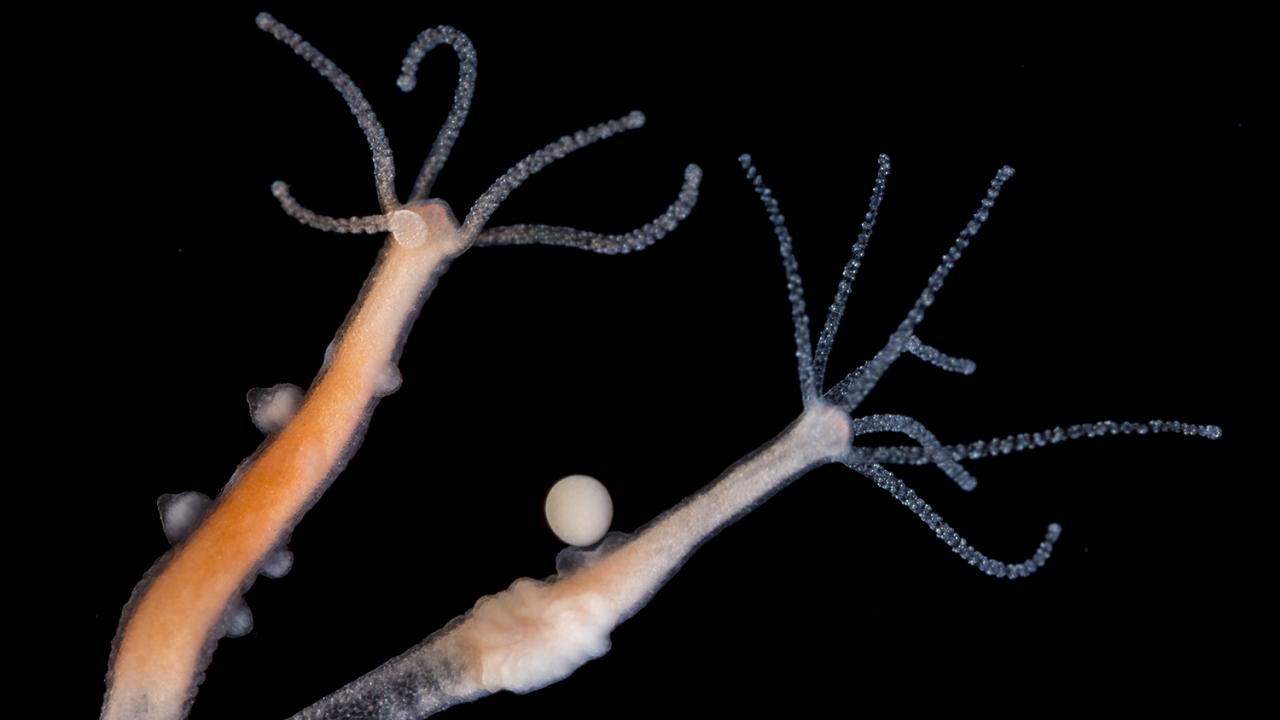
Hydra and the Quest to Understand Immortality
by Greg Watry
January 04, 2018
Hydra are unique because their stem cells exist in a continuous state of renewal. Kept safe and in isolation, these organisms show no signs of aging. Outside the lab, the only real threats they face are predators, weather extremes and disease.
Ever resilient, Hydra can survive dismemberment by regenerating lost sections of their bodies. Chop a Hydra into segments, and each segment will become a new Hydra. Blend one up, and you’re left with a soup of cells. If you ball up those cells using a centrifuge, they reorganize, eventually forming a new Hydra.
Assistant Professor Celina Juliano, Department of Molecular and Cellular Biology at the UC Davis College of Biological Sciences, and her colleagues are probing Hydra stem cells, hoping to find clues to the organism’s regenerative capabilities and longevity.
The eternal embryo
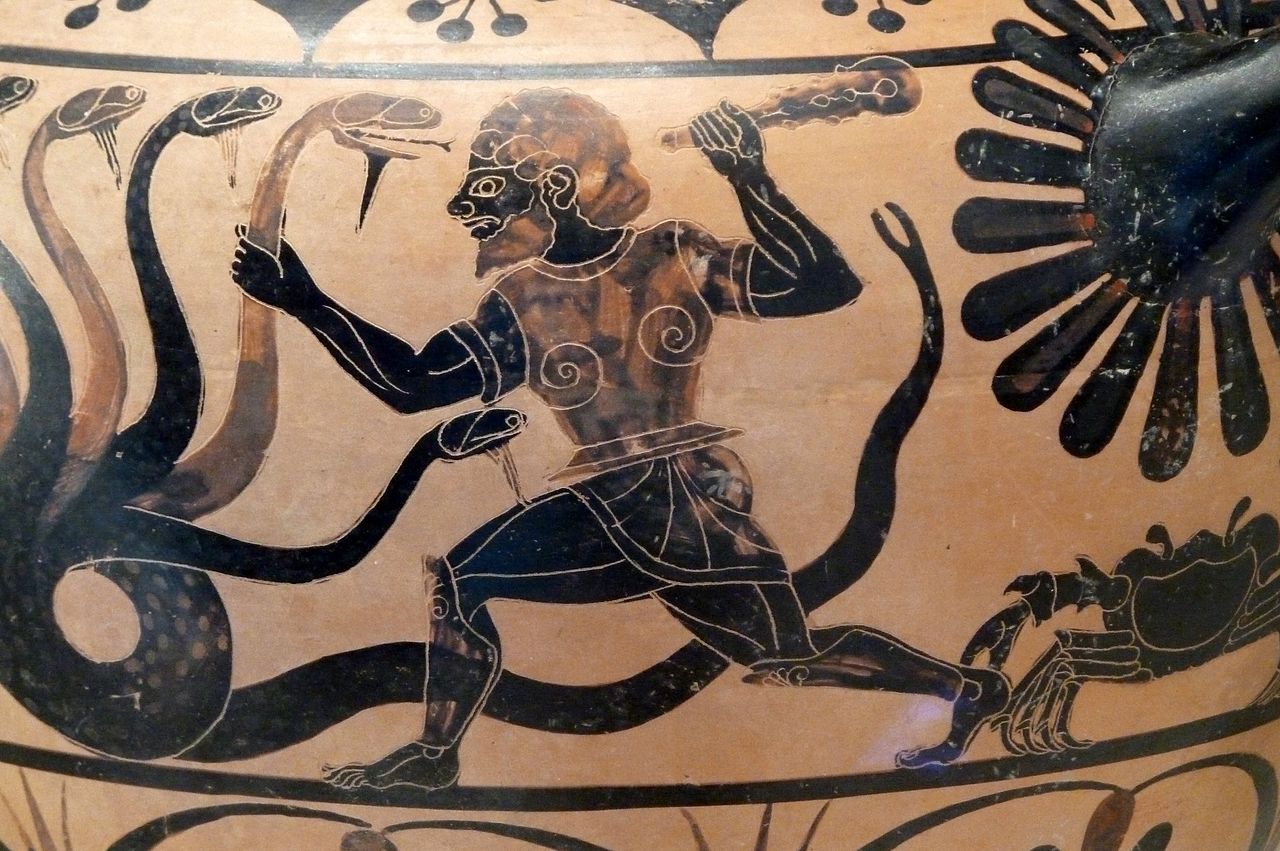
Stem cells form the foundational building blocks of an organism’s body. During embryonic growth and development, stem cells differentiate, becoming various cells throughout the body. In many organisms, stem cells lose their ability to replace dysfunctional cells with age.
Hydra stem cells are different.
“If the animal has very powerful stem cells—because stem cells are the cells that give rise to all of your tissues—then you can regenerate very well,” said Juliano. “They sometimes call Hydra the eternal embryo.”
Continuous stem cell renewal is a major focus of Juliano’s research. However, this doesn’t fully explain Hydra longevity. To uncover this mystery, Juliano is interested in how Hydra maintains its genome despite undergoing a large number of cell divisions.
“The Hydra renews itself all the time, but just renewing yourself isn’t enough,” said Juliano. “The genome itself has to be faithfully propagated.”
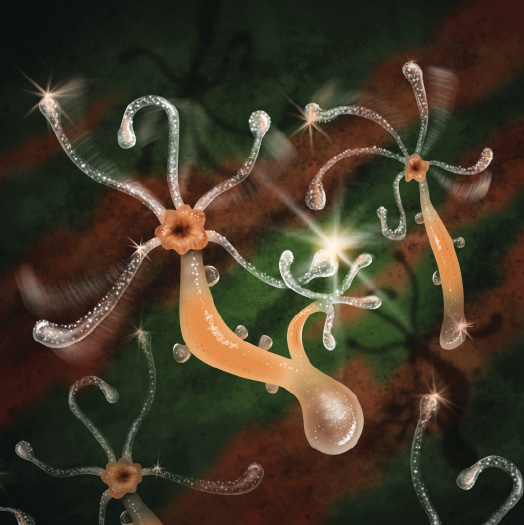
A Menagerie of Model Organisms
What can a worm or fish tell us about the human body? When it comes to biology, quite a lot actually. In many cases, scientific inquiry begins with our relatives in the animal kingdom.
Why don’t Hydra age?
Juliano and her colleagues in the Juliano Lab are searching for the genetic elements that help prevent biological aging in Hydra. They’re particularly interested in transposons, which are also called “jumping genes.”
In organisms that age, such as humans, transposon expression is kept in check by a variety of genetic pathways during youth. As time plods on, aging cells lose control over transposon repression. Uncontrolled, these jumping genes bounce around the genome, replicating, proliferating and inserting themselves into the genome like unhinged saboteurs.
Some believe transposon expression plays a role in aging, but why the human body’s cells eventually lose control over this pathway is still a mystery.
Hydra cells never lose the ability to repress transposons.
“I wouldn’t say it’s the magic bullet of why Hydra doesn’t age,” said Juliano. “But this is one thing we’re interested in, how transposons are repressed in adult stem cells.”
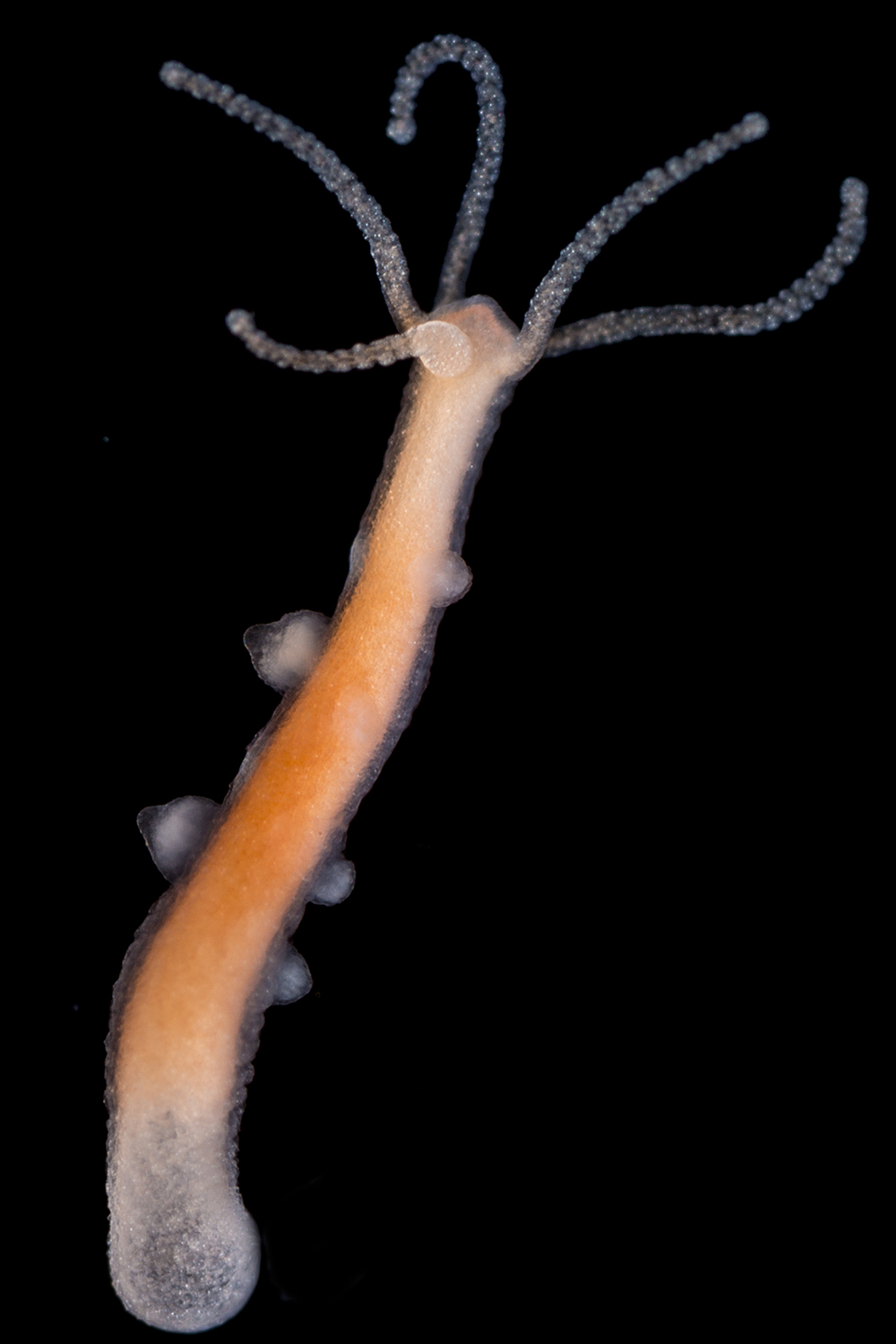
A place for the North American Hydra community
Though the Hydra is a miraculous animal, it is a much more popular model organism in Europe than the United States.
“Funding is tight in the United States and grants are more likely to go to more established model organisms, thus making it difficult to work on Hydra,” said Juliano.
To vitalize and grow the North American Hydra community, Juliano and some colleagues organized Hydroidfest 2016, held at the UC Davis Bodega Marine Laboratory. Roughly 60 researchers from seven countries attended the meeting, which was funded by a grant from the National Science Foundation.
“It was small, but you had this feeling that it was the start of something special,” said Juliano. “We had people come to the meeting who weren’t Hydra biologists, and they were interested in starting projects in their labs.”
Along with Christine Schnitzler, an assistant professor of biology at the University of Florida, Juliano is organizing an expanded meeting, dubbed Cnidofest 2018: The Cnidarian Model Systems Meeting, from the phylum Cnidaria (which includes Hydra, corals, sea anemones and jellyfish). It will take place at the University of Florida’s Whitney Laboratory for Marine Biosciences in September 2018.
Visit the Juliano Lab page to learn more about Hydra research.
spacer
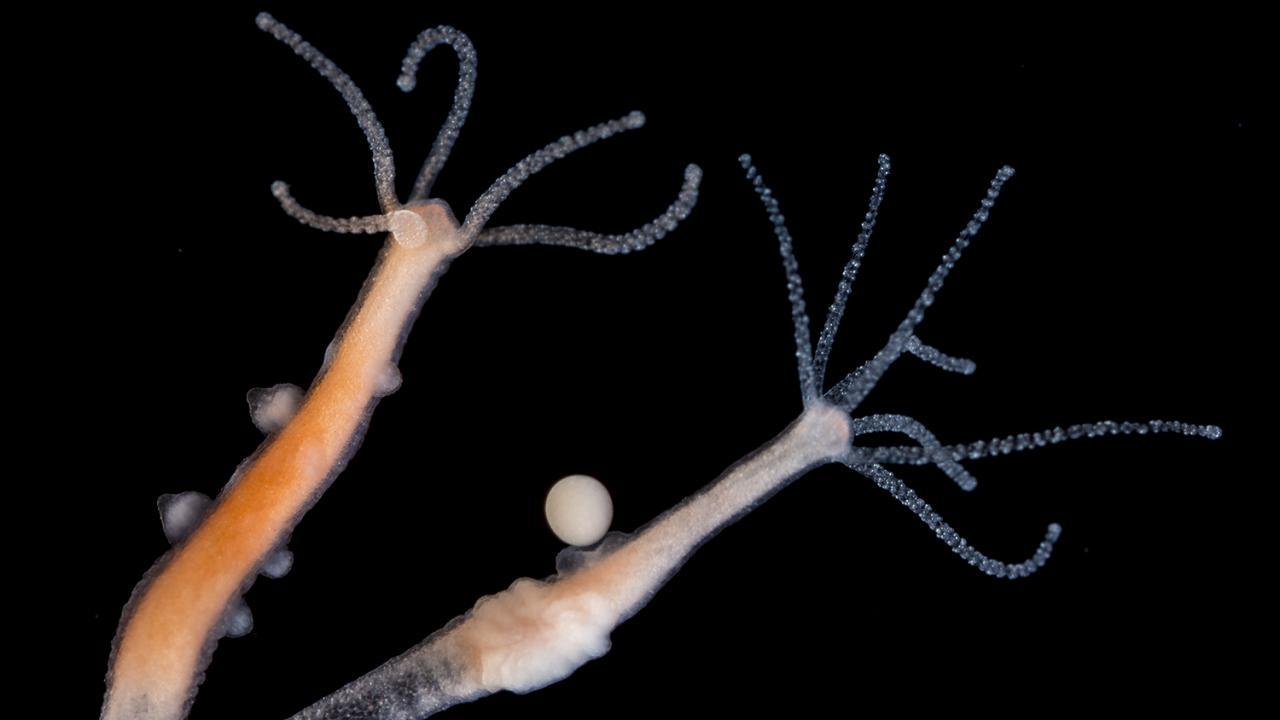
$1.5 Million NSF Grant Will Help Make Hydra a Better Model for Studying Regeneration
by Greg Watry
August 31, 2018
What comes to mind when you think of the animals scientists use for life sciences research? Worms? Flies? Mice?
While these popular model organisms are staples in research laboratories across the globe, understanding some of life’s mysteries, such as regeneration, require a different kind of creature.
Enter the Hydra, a small freshwater invertebrate that’s got a knack for biological immortality and regeneration. Despite its miraculous abilities, the Hydra remains understudied. But thanks to a roughly $1.5 million grant from the National Science Foundation’s Enabling Discovery through Genomic Tools (EDGE) program, Assistant Professor Celina Juliano, Department of Molecular and Cellular Biology, and her lab will help develop genomic tools that will promote regenerative research and hopefully increase the number of researchers using Hydra as a model system.
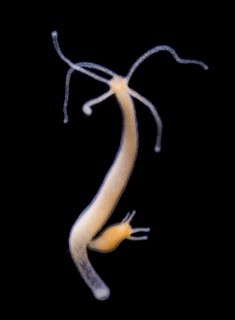
Constantly-renewed stem cells
Hydra have been referred to as the “eternal embryo.” And the name is fitting. The embryo of any animal, including humans, has the ability to produce all cell types. This ability doesn’t usually continue into adulthood. But Hydra constantly renew all of their cells from stem cell populations throughout their entire lives, meaning these creatures have a bottomless well for replacing every single type of cell in their body.
“If you or I were injured, say our hands were cut off, there’s a specific genetic program that is activated and is required to heal the wound, but the hand wouldn’t grow back” said Juliano “That same genetic program is activated after injury throughout the animal kingdom, but in some cases, instead of triggering scarring, it triggers regeneration and thus the missing body part is replaced.”
Juliano and her lab are currently wrapping up a single-cell sequencing project on the Hydra. Over the course of the last year and half, they’ve sequenced every cell type in the Hydra body, defining the exact genes expressed in each cell type.
With that information, Juliano and her team now know the genes expressed in every cell type, which allows them to understand how all cell types are made in Hydra. This information also gives Juliano and her team greater control over the genes they’d like to study in the cells of their experimental organisms.
“You want to be able to modify gene function and then look at the resulting phenotype, or observable characteristics,” said Juliano. “So you can manipulate gene function and maybe something really drastic would happen. For example, in Drosophila changing the expression of just one gene leads to a leg growing out of the eye. That’s a very extreme example.”
But in order to better control genes, certain tools need to be developed. And that’s where the grant funding comes in.
Making Hydra a model for all
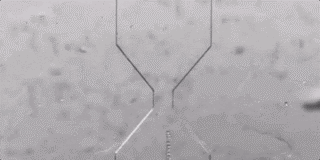
Juliano is partnering with Jacob Robinson, a neuroengineer from Rice University, to develop methods that can be used to study gene function in Hydra. The team will use the grant to focus on improving methods to study the regeneration of Hydra, including the regeneration of neurons.
Juliano’s team will construct tools to turn genes on and off at specific times and places in a Hydra’s continuous development as an adult. Robinson, according to Juliano, will create tools that will help them study the Hydra’s nervous system including the first microfluidic technologies designed to probe neural activity and behavior in Hydra. Combined, the genetic tools and phenotyping technologies will help them understand how Hydra can regenerate all of its cells, including the nervous system and, potentially, why humans can’t.
But there’s also another tool Robinson is developing that Juliano knows members of her lab will appreciate. One tricky thing about keeping Hydra is they require a lot of maintenance. And you have to clean the Hydra by hand. With the thousands of animals Juliano and her lab manage, the work is time intensive. Using his engineering expertise, Robinson is developing a robot that will carry out maintenance of the Hydra and their enclosures.
“He’s designing what we’re calling the ‘Hydra robot,’” said Juliano.
spacer
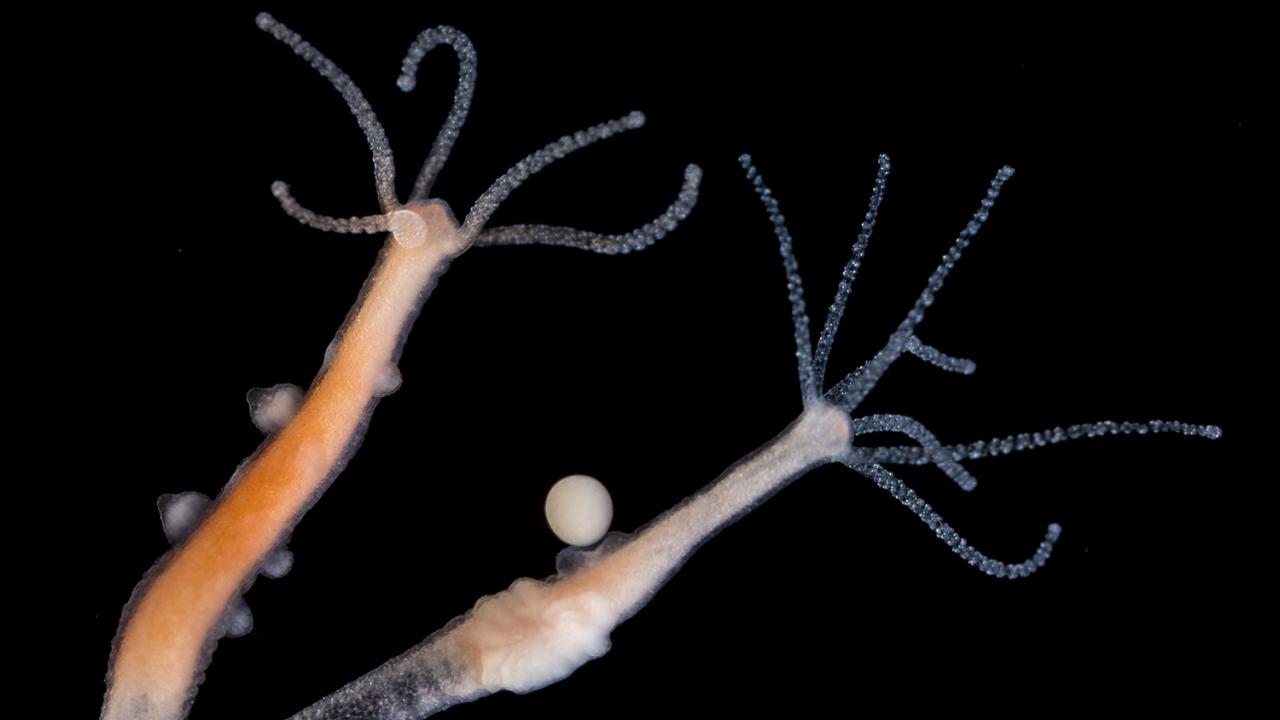
$1 Million Keck Foundation Grant Backs Research to “Build a Brain”
Manipulating the nervous system of Hydra vulgaris
by July 13, 2021
Celina Juliano, an associate professor in the Department of Molecular and Cellular Biology, and Jacob Robinson of Rice University’s Brown School of Engineering have won a $1 million Keck Foundation grant to advance the team’s synthetic neurobiology effort to define the connections between neurons and muscles that drive programmed behaviors in living animals.
To begin with, Robinson, Juliano and their colleagues are putting their faith in a very small animal, the freshwater cnidarian Hydra vulgaris, a tiny tentacled creature that has long been a focus of study in the Robinson and Juliano labs. In 2019, Juliano and her UC Davis colleagues published a study in Science that documented their use of single-cell sequencing techniques to create a “single-cell molecular map” of nearly all of the cell types in Hydra, which yielded an unexpected application in neuroscience.
“We found that the Hydra’s nervous system is very simple,” said Juliano. “And knowing the genes that are expressed, and where the neurons are, gives us what are essentially molecular handles we can use to drive the expression of exogenous genes, even to manipulate the nervous system.”
The value, in this case, is the potential to break existing connections and create new ones, which could be used to engineer new behaviors. “To successfully engineer new neural connections, we first have to know how the animal itself works,” explained Juliano. “That’s what initially excited a biologist like me.” Now, with a sophisticated understanding of this simple organism, Juliano and Robinson are ready to build on existing understandings of neurobiology.
Combined with the Juliano lab’s cell type-specific genetic manipulation techniques, Robinson’s team, part of Rice’s Neuroengineering Initiative, hopes its high-throughput neural and behavioral recording technologies will allow the researchers to improve their understanding of how neural pathways regulate Hydra behavior.
“We’ve built a lot of the infrastructure to work with the animals in the lab to measure their neural activity and their behaviors,” Robinson said. “We also use computational techniques to automate the process, which allows us to look at many animals in parallel and get large quantities of data.
“The next big leap will be to edit the animal’s nervous systems, and that’s what this award will help support,” he said. “For example, if we want to create a synthetic connection between two neurons, we could make specific neurons in the animal express a neuropeptide signaling molecule. We could then engineer another group of neurons, or even the muscle cells, to express the receptor for that signaling molecule.
“Then we’ll have made a new organism with a connection between two cells that don’t normally connect,” he said. “In principal, we can build on this concept to make more complicated networks and designer neural circuits. As an engineer, I like to think of these connections between neurons like electronic circuits. If we can wire them up by design we should be able to program behaviors from scratch.”
Because Hydra reproduce both sexually and asexually, the labs expect they’ll be able to create colonies of custom Hydra for analysis.
Robinson ultimately hopes to design and build soft, self-healing “biorobots,” as well as to create and repair organs and tissues that require functioning neural circuitry, in this case, “designer circuits” like biological oscillators, switches and logic gates that will “enable rational design of complex behaviors.”
The W. M. Keck Foundation was established in 1954 in Los Angeles by William Myron Keck, founder of The Superior Oil Co. One of the nation’s largest philanthropic organizations, the foundation supports outstanding science, engineering and medical research. The foundation also supports undergraduate education and maintains a program within Southern California to support arts and culture, education, health and community service projects.
This technique, called CLARITY gives researchers an unprecedented ability to study the neurostructure and circuitry of the brain. “Our goal is to understand the system in its entirety but also at high resolution,” says Deisseroth, the D.H. Chen Professor in Stanford School of Medicine and a professor of bioengineering and of psychiatry and behavioral sciences.
The accompanying video, produced by Miles O’Brien and Ann Kellan of Science Nation, and published here with permission by Stanford Engineering, shows how CLARITY could lead to new treatments for conditions like depression, and pave the way for medical advances outside the brain such as offering researchers new ways to understand electrical pathways in the heart or learn why damaged fibers in the spinal cord cause pain.
Deisseroth recently combined CLARITY with another technique he pioneered called optogenetics. It involves the use of light to control the behavior of cells. Using CLARITY and optogenetics together for the first time, Deisseroth’s team showed how certain neurons in the prefrontal cortex are built to respond to reward or aversion, a finding with implications for treating mental illness and addictions.

Generating a Research Award: Assistant Professor Celina Juliano Wins Elizabeth D. Hay New Investigator Award
by Greg Watry
January 16, 2020
Assistant Professor Celina Juliano, Department of Molecular and Cellular Biology, was recently named as the winner of the 2020 Elizabeth D. Hay New Investigator Award. The award, given by the Society for Developmental Biology, recognizes researchers “who have performed outstanding research in developmental biology during the early stages of their independent career.”
“I’m completely overwhelmed,” said Juliano. “I ‘grew up’ scientifically in this society and some of the scientists I most admire are part of this society. This is my community. To be honored by them is an amazing feeling.”
Juliano studies the regenerative capabilities and “biological immortality” of Hydra (Hydra vulgaris), a small freshwater invertebrate. Hydra boasts stem cells that exist in a continuous state of renewal. Every 20 days the organism renews its entire body thanks to this bottomless well of stem cells.
In July 2019, Juliano and her colleagues published a study in Science that documented their use of single-cell sequencing techniques to track the developmental trajectory of the three stem cell developmental lineages in Hydra. They created a “single-cell molecular map” of nearly all cell types in Hydra and gleaned further insight into the structure of the Hydra nervous system.
“Regeneration in Hydra was discovered over 250 years ago, yet there is still so much to learn,” said Juliano. “I hope that over the course of my career we can really dig in there and learn the molecular mechanisms that control Hydra’s remarkable regenerative capacities.”
Coincidentally, Hay, who the award is named after, also studied regeneration.
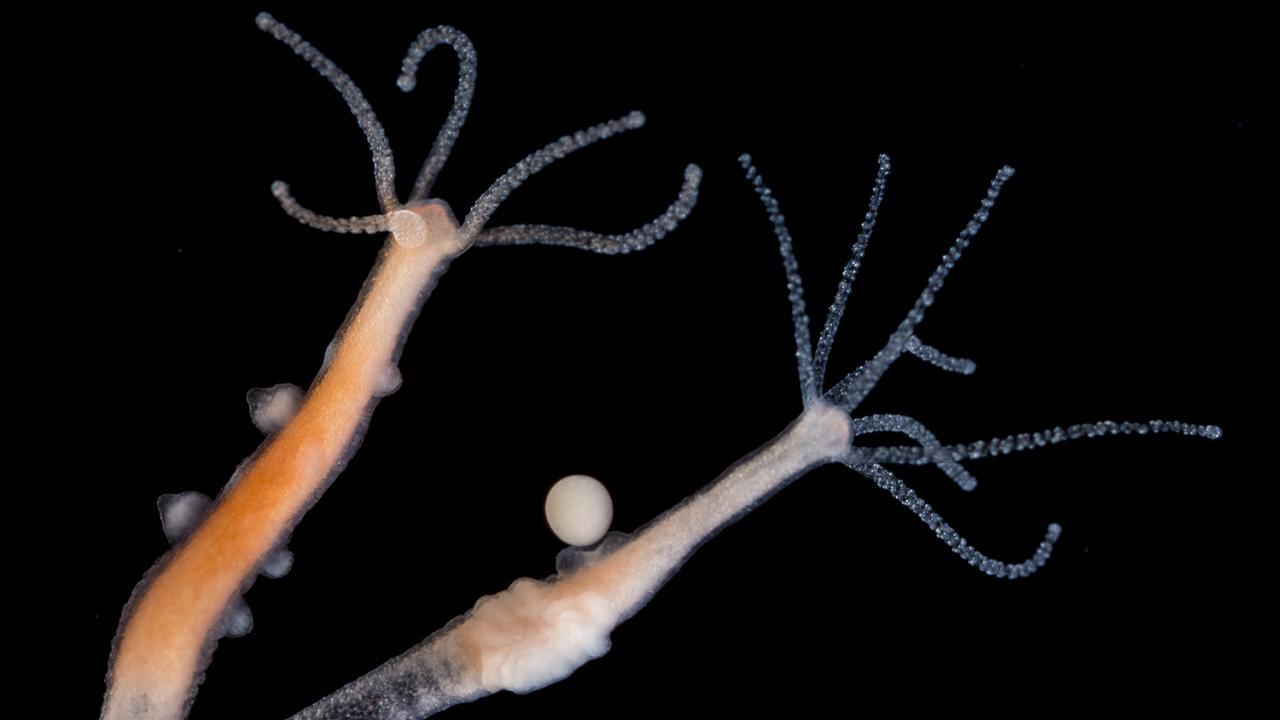
Juliano was nominated for the Elizabeth D. Hay New Investigator Award by B. Duygu Özpolat, a Hibbitt Fellow at the Marine Biological Laboratory. Özpolat met Juliano in 2017 when the latter visited the Marine Biological Laboratory.
“I have followed her research for almost a decade,” Özpolat said of Juliano. “In the letters submitted during Dr. Juliano’s nomination for this award, everyone talked about the excellent scientist she is, with concrete examples of the exceptional independence she displayed since she was a graduate student.”
“She had been setting an example as the wholesome and well-rounded scientist we all want to see in a new investigator: an exceptional, creative, independent scientist, a natural leader, a great mentor and a role-model colleague,” added Özpolat.
In addition to research, Juliano advocates for Hydra as a research organism and actively takes measures to spread its use in North American laboratories and beyond. She’s a founder of both the Cnidarian Model Systems Meeting (Cnidofest), the Hydra recourse hub website www.openhydra.org and the annual Hydra workshop held at the Marine Biological Laboratory.
“I am fortunate to work with amazing people, both the members of my lab and my collaborators,” said Juliano. “I have had fantastic mentors and I have fantastic and supportive colleagues at UC Davis. Finally, I have a great support system of other Assistant Professors in the developmental biology field, as well as in club Cnidarian, that all really help to keep me sane.”
Asked what advice she’d give fledgling scientists, Juliano said, “Pursue questions that interest you and don’t worry if some people think what you are up to is weird. When figuring out who to collaborate with, choose people you truly enjoy rather than the ‘most successful.’ But finally, everyone has a different path so, take all advice with a grain of salt and do what works for you.”
Stay Informed! Sign up for our monthly email newsletter
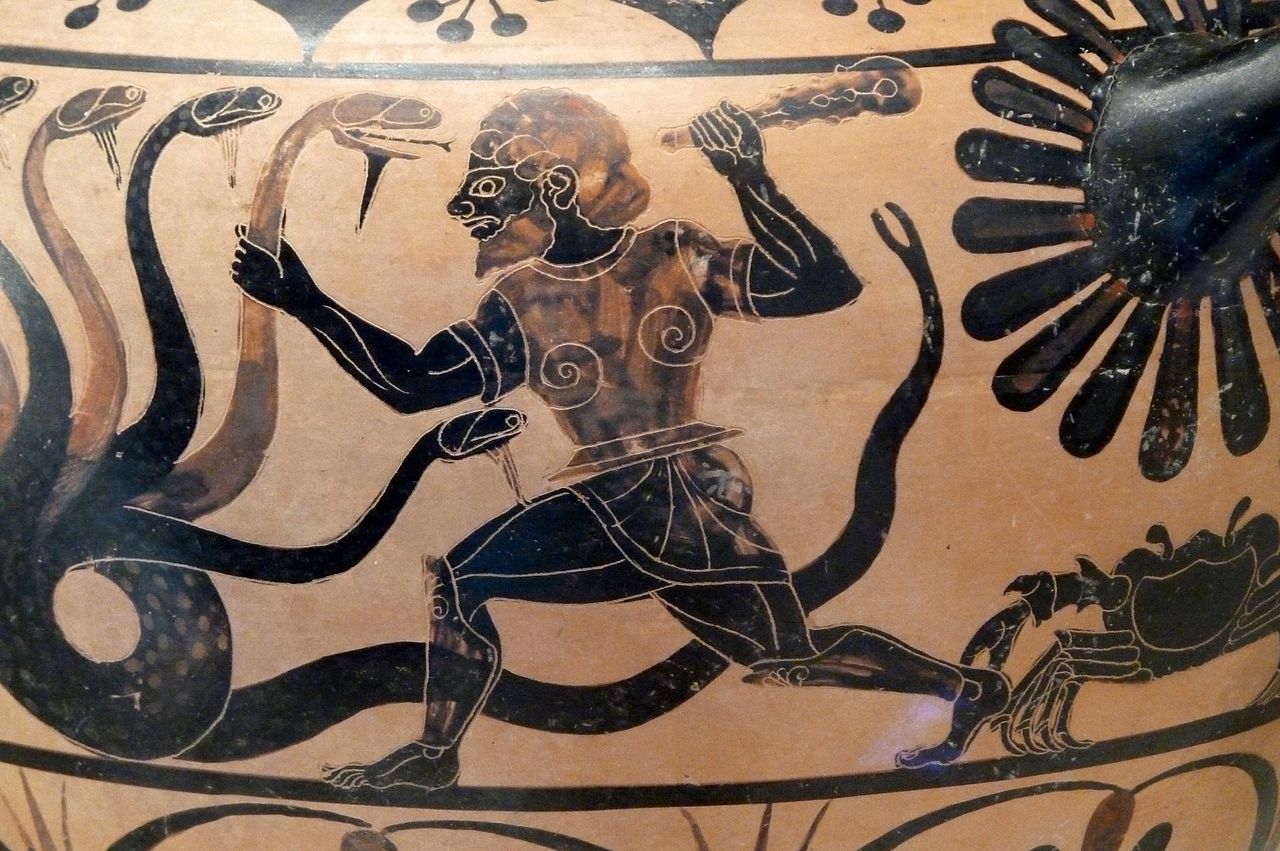
spacer
The “Immortal” Hydra
 Eternal life. For humans, it’s a fantasy pulled from science fiction, but for the Hydra (Hydra vulgaris), a small freshwater invertebrate, it’s a reality. These organisms, which look like miniature, fleshy palm trees with swaying fronds of tentacles, boast stem cells that exist in a continuous state of renewal and seem to hold within their genomic code the key to biological immortality. Every 20 days, the whole organism renews itself.
Eternal life. For humans, it’s a fantasy pulled from science fiction, but for the Hydra (Hydra vulgaris), a small freshwater invertebrate, it’s a reality. These organisms, which look like miniature, fleshy palm trees with swaying fronds of tentacles, boast stem cells that exist in a continuous state of renewal and seem to hold within their genomic code the key to biological immortality. Every 20 days, the whole organism renews itself.
“As far as we can tell, it doesn’t age or die,” says Assistant Professor Celina Juliano, Department of Molecular and Cellular Biology. “You can cut little pieces out of the animal and it will regrow and maybe the most amazing thing is that you can dissociate the animal into single cells, mix them all up, put them back in a ball and a new Hydra will just grow out of it.”
Hydra are virtually immortal in a lab environment. Their unique abilities make them ideal for studies in healing and aging. Hydra regeneration was noted in 1744 by naturalist Abraham Trembley. Almost three centuries later, this animal’s amazing capabilities remain a mystery. Juliano hopes to solve some of those lingering questions and further establish the Hydra as a model organism for regenerative research.
“If you or I were injured, say our hands were cut off, there’s a specific genetic program that is activated and is required to heal the wound, but the hand wouldn’t grow back,” says Juliano. “That same genetic program is activated after injury throughout the animal kingdom, but in some cases, instead of triggering scarring, it triggers regeneration and thus the missing body part is replaced.”
Juliano and her colleagues have meticulously conducted a single-cell sequencing project on Hydra, defining the exact genes expressed in each cell type. They’re developing tools to help them better control this gene expression.
As technologies advance, UC Davis scientists and researchers are gaining unprecedented windows into the machinations of life. With the help of model organisms, they’ll reveal the causes of disease and illuminate potential paths to treatment and prevention.
Our tiny relatives in the animal kingdom are making mammoth contributions to scientific research and helping us answer the biggest questions about life.
More information about hydra:
spacer
I was curious about the mention of Marvel’s Captain America: Winter Soldier, knowing that comics have been used from their beginning as predictive programming tools. I found the following article and wanted to include it in this post because it is relevant on many levels.
The link to the Revolutionary war and the Patriots
The link to the atrocities committed by our Country in Viet Nam
The link to genocide/mass murder by the ruling class, for their convenience
The link to the creation of cyborgs.
The link to dead walking.

 Learn the History of the Term “Winter Soldier” and Why Ed Brubaker Used the Name in Captain America
Learn the History of the Term “Winter Soldier” and Why Ed Brubaker Used the Name in Captain America
“The summer soldier and the sunshine patriot will, in this crisis, shrink from the service of their country” – Thomas Paine
With Captain America: The Winter Soldier coming out, soon I was curious about where the name “Winter Soldier” came from. It turns out it’s a lot more than just a cool-sounding name comic book writer Ed Brubaker came up with. It has its roots in the Vietnam War and even goes back to Thomas Paine.
I first became curious about the origins of the term “Winter Soldier” after hearing podcast host Jesse Thorn mention it a few times on his show Jordan, Jesse, Go! He was put off by Marvel’s use of the phrase due to its association with the Vietnam War’s Winter Soldier Hearings.
Rather than paraphrasing him, I reached out to Thorn about his feelings on the situation. Here is his reply:
My father is a disabled veteran who helped start an organization called Vietnam Veterans Against the War. In the Winter Soldier Hearings, VVAW presented testimony from American servicemembers who’d participated in the commission of war crimes. (under orders) The soldiers who testified spoke about villages being destroyed, women and children being killed, and helped reveal to the public the secret war in Laos in which my father participated, and which the government was still denying had even occurred. It was an incredibly painful, incredibly important moment in the discourse around the Vietnam War. It asked Americans to face the atrocities that were being committed, by their children, in their name.
I don’t presume to know what the folks at Marvel were shooting for when they named a popcorn movie after the Winter Soldier hearings. Maybe they knew about the hearings, maybe they didn’t, maybe they just thought it sounded cool. I couldn’t tell you. I haven’t seen the movie, either. Maybe it’s not what I’m expecting. In the meantime, I just hope it drives a few people to learn a bit more about the history of the movement that spawned the hearings, and about the brave men and women who went to war, came home, and dedicated their lives to ending the conflict.
If folks want to learn more about the Winter Soldier Investigation, they can pick up Winter Soldier, a documentary about the events: http://www.wintersoldierfilm.com/. Or, honestly, just start with Wikipedia.
Thorn admits to not being familiar with the character of The Winter Soldier in Marvel comics, and I’ll admit to having not been familiar with the Winter Soldier Hearings until I heard him talk about them on his show. I did some research about the hearings and into why the Vietnam Veterans Against the War chose that name.
The term was explained by current Secretary of State John Kerry when he testified at the hearings on April 22, 1971, saying:
A new cold war: How the Army is preparing for a fight in the Arctic
Jul 30, 2018
:quality(70)/cloudfront-us-east-1.images.arcpublishing.com/archetype/IXCOETMHF5EGNHMMUOCASJDZAM.jpg) |
:quality(70)/cloudfront-us-east-1.images.arcpublishing.com/archetype/SLGL34IGHBDDBA62RZMCYVT574.jpg) |
spacer
Vietnam War Hearing: John Kerry Testimony – Vietnam Veterans Against the War (1971)
On April 22, 1971, Kerry became the first Vietnam veteran to testify before Congress about the war, when he appeared before a Senate committee hearing on proposals relating to ending the war. He was still a member of the United States Navy Reserve, holding the rank of Lieutenant Junior Grade. Wearing green fatigues and service ribbons, he spoke for nearly two hours with the Senate Foreign Relations Committee in what has been named the Fulbright Hearings, after the Chairman of the proceedings, Senator J. W. Fulbright. Kerry began with a prepared speech, in which he presented the conclusions of the Winter Soldier Investigation, and then went on to address larger policy issues.
We call this investigation the “Winter Soldier Investigation.” The term “Winter Soldier” is a play on words of Thomas Paine in 1776 when he spoke of the Sunshine Patriot and summertime soldiers who deserted at Valley Forge because the going was rough.
We who have come here to Washington have come here because we feel we have to be winter soldiers now. We could come back to this country; we could be quiet; we could hold our silence; we could not tell what went on in Vietnam, but we feel because of what threatens this country, the fact that the crimes threaten it, not reds, and not redcoats but the crimes which we are committing that threaten it, that we have to speak out.
The Thomas Paine reference he makes comes from the December 1776 paper The American Crisis in which Paine wrote (emphasis my own):
THESE are the times that try men’s souls. The summer soldier and the sunshine patriot will, in this crisis, shrink from the service of their country; but he that stands by it now, deserves the love and thanks of man and woman. Tyranny, like hell, is not easily conquered; yet we have this consolation with us, that the harder the conflict, the more glorious the triumph. What we obtain too cheap, we esteem too lightly: it is dearness only that gives every thing its value. Heaven knows how to put a proper price upon its goods; and it would be strange indeed if so celestial an article as FREEDOM should not be highly rated.
(Editor’s note: Possible spoiler alert for Captain America: The Winter Soldier below. If you don’t already know the identity of the Winter Soldier himself and you don’t want to know, you should stop here and wait until you see the film on April 4th. Don’t get upset if you read ahead and get spoiled, because Glen definitely does not care. -Victoria)
Of course Marvel’s Winter Soldier predates the upcoming movie, though many people like Thorn are probably hearing about the character for the first time in the lead up to the film. The Winter Soldier was introduced by writer Ed Brubaker during his run on Marvel’s Captain America comic.
The Winter Soldier first appeared in 2005 in Captain America #1. In the comics he is really James “Bucky” Barnes, Captain America’s former kid sidekick long thought to have died in World War II, who (until 2005) was famously one of the few people to ever stay dead in comic books.
In Captain America #8 the name is explained by S.H.I.E.L.D. Director Nick Fury to Captain America himself:
Nick Fury tells Captain America:
Story went that they kept him on ice and only woke up for the big gigs. He’d be in stasis for five years… then out in the world for six months working… …and back to Rip Van Winkle-land once the bodies hit the morgue.
I also consulted superhero historian and The Mary Sue contributor Alan Kistler for his explanation for the in-world reason for the name. It’s pretty similar to what Fury says in the above image, but Kistler fills in a little backstory as well if you’re not familiar with the characters:
Bucky’s death wasn’t retconned exactly, it still happened. USSR forces found him in the water and used comic book science to revive him, but he’d been dead long enough that there was serious brain damage. They made him a cyborg and thought ok, this is a guy trained by Captain America, we can put him on missions. But since he was pretty useless otherwise, they kept putting him back into suspended animation when he wasn’t needed.
So since he was basically kept on ice for years at a time, and since the USSR often associates itself with the cold climate, he was nicknamed the Winter Soldier.
It seems that at least to the characters in the Marvel universe, the name has no association with the Winter Soldier Hearings that I could find.
To get a better understanding of why someone would use “Winter Soldier” as the name of a comic book character, I turned to the person who used “Winter Soldier” as the name of a comic book character: Ed Brubaker. I asked Brubaker why he chose the name, and if the Winter Soldier Hearings were an influence. He told me:
I came up with the name in 2004, when I was pitching for [Captain America]. I liked the sound of it for a Russian assassin from the cold war, and also liked its connections to Thomas Paine, my personal favorite founding father. The “summer soldier” quote is from The American Crisis, and I believe he meant that the summer soldiers are only patriots when it’s easy to be, but the winter soldier is a true soldier for the cause.
But yes, the first time I heard the specific name was when reading about the Vietnam War and the Winter Soldier hearings. I think that sparked something, a name that could imply Russia’s cold winters and the cold war, that was also tied to atrocities in another war, and that connected all the way back to the American Revolution. It’s a very evocative name for a Captain America villain.
It’s heartening to know that Brubaker was aware of not only the hearings, but of the Thomas Paine quote that gave them their name. A lot more thought went into the name than it simply sounding cool.
I’ve yet to see Captain America: The Winter Soldier, but in the comics when Captain America restores The Winter Soldier’s memory, Bucky has to reckon with the guilt over all the things he was made to do as The Winter Soldier. That includes leveling a terrorist attack against Philadelphia, killing countless numbers of innocent people. It would have been easy for him to let that guilt destroy him, to be a Summer Soldier and desert, but he doesn’t.
Like the real Winter Soldiers of Vietnam, Bucky owns his past, but knows it doesn’t define him. When he regains his memory, he doesn’t only remember the awful things the Russians programmed him to do. He remembers who he is as a person, and why he was fighting alongside Captain America in the first place. He re-dedicates himself to that original fight, and eventually takes up the mantle of Captain America to defend his country.
I think the name is perfect.
—
My sincere thanks to Ed Brubaker and Jesse Thorn for taking the time to answer my questions, and to Alan Kistler for help with the comic book research for this article.
Brubaker is currently writing the spy thriller Velvet published through Image comics. Thorn is in the middle of his Maximum Fun podcast network’s annual MaxFunDrive, and you can read Kistler’s wonderful Agents of S.T.Y.L.E. column about the history of superhero costumes on our sister site The Mary Sue.
Captain America: The Winter Soldier is out in theaters April 4th.
(Images via Marvel)
spacer
At this time, WE MUST BE WINTER SOLDIERS, willing to stand up, speak up and fight for FREEDOM! For our NATION! FOR GOD!
This is no time to shrink back and fall in line. This is the time to put on our ARMOUR and STAND IN FAITH!
spacer
<







 Learn the History of the Term “Winter Soldier” and Why Ed Brubaker Used the Name in Captain America
Learn the History of the Term “Winter Soldier” and Why Ed Brubaker Used the Name in Captain America